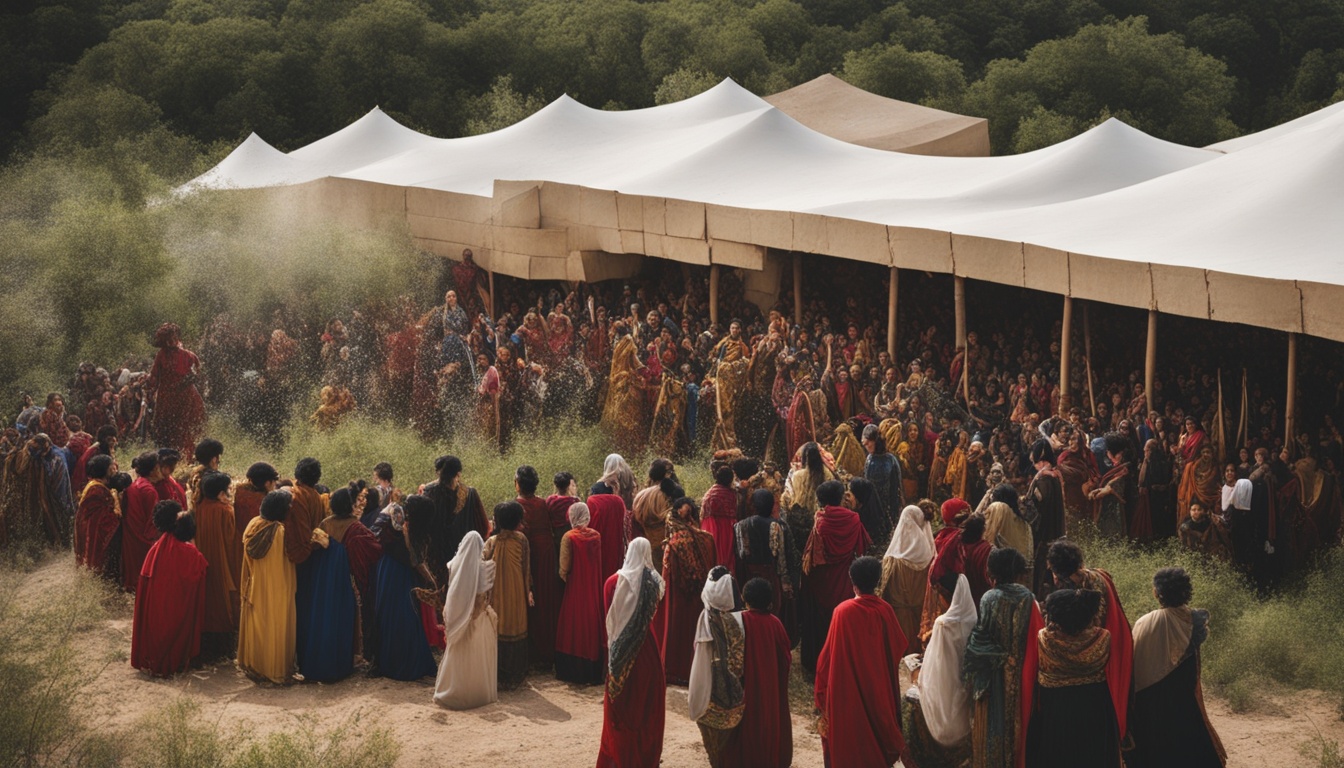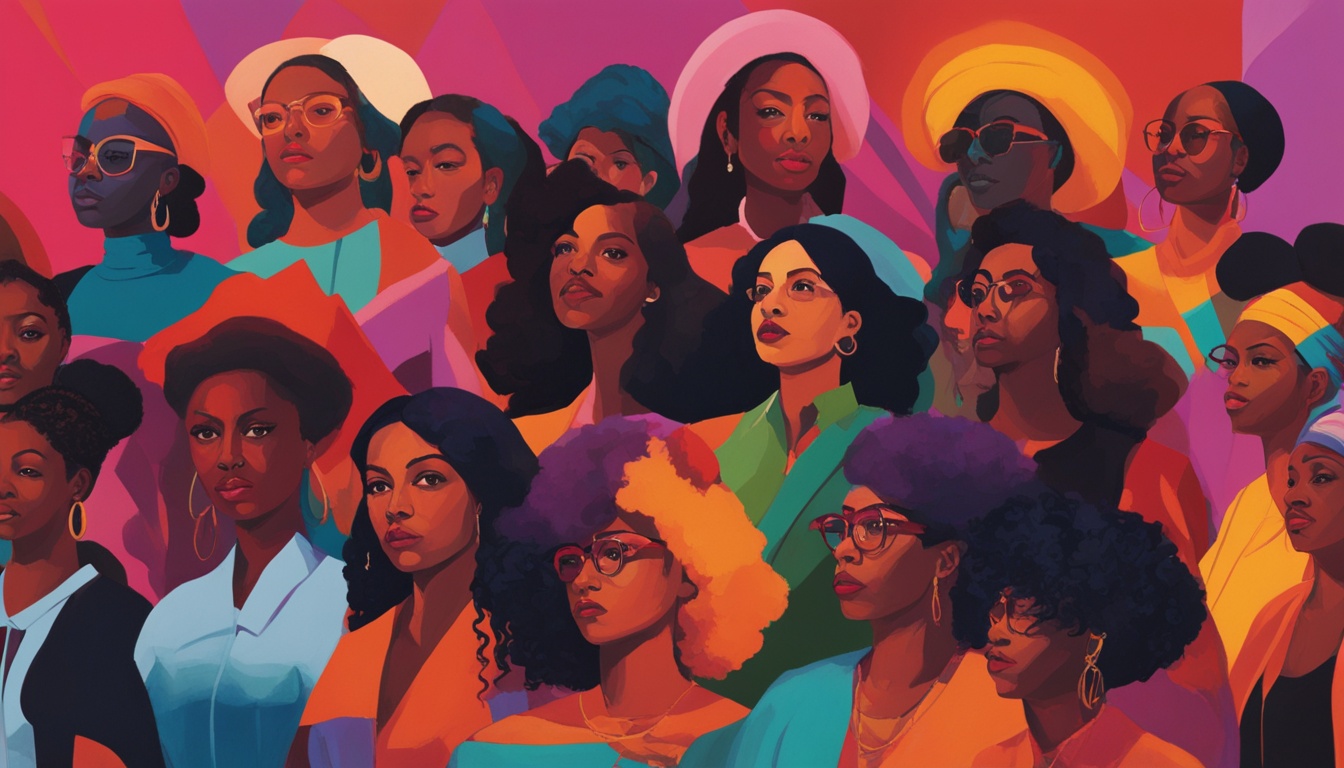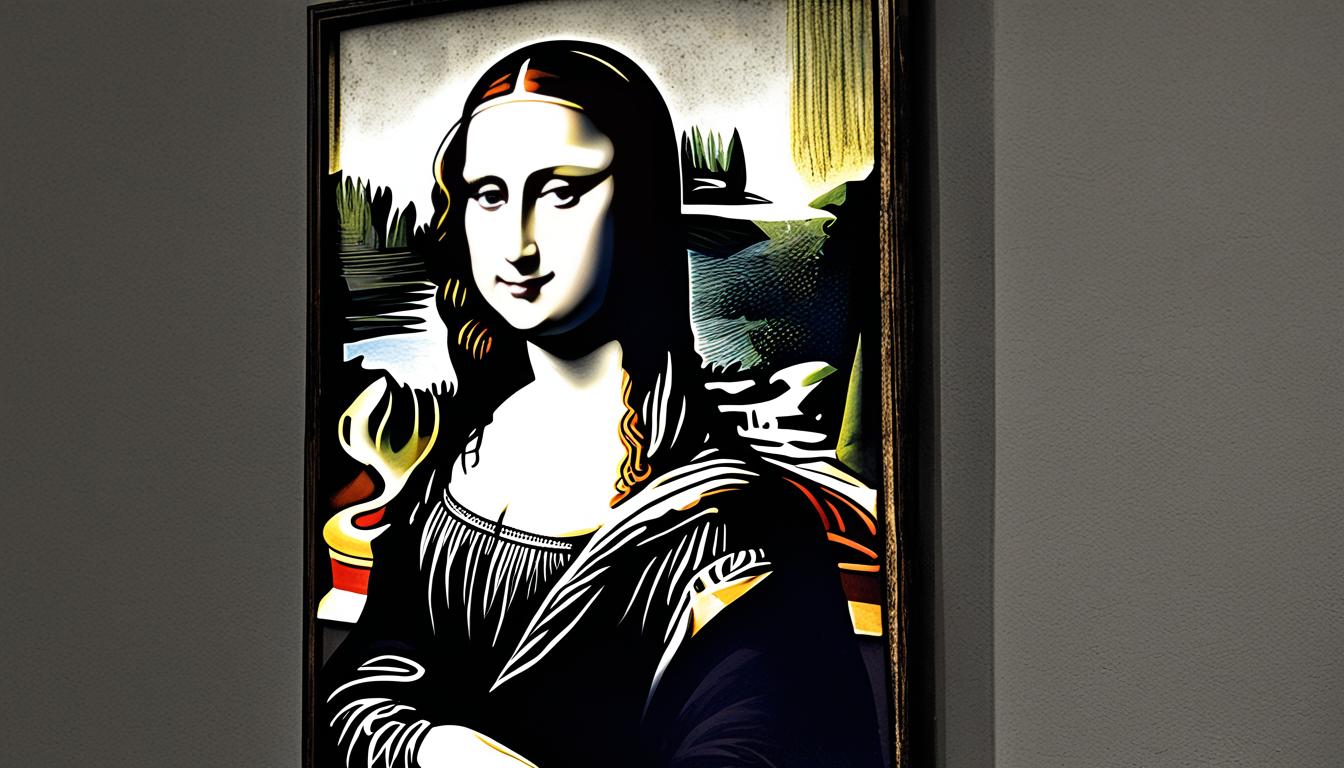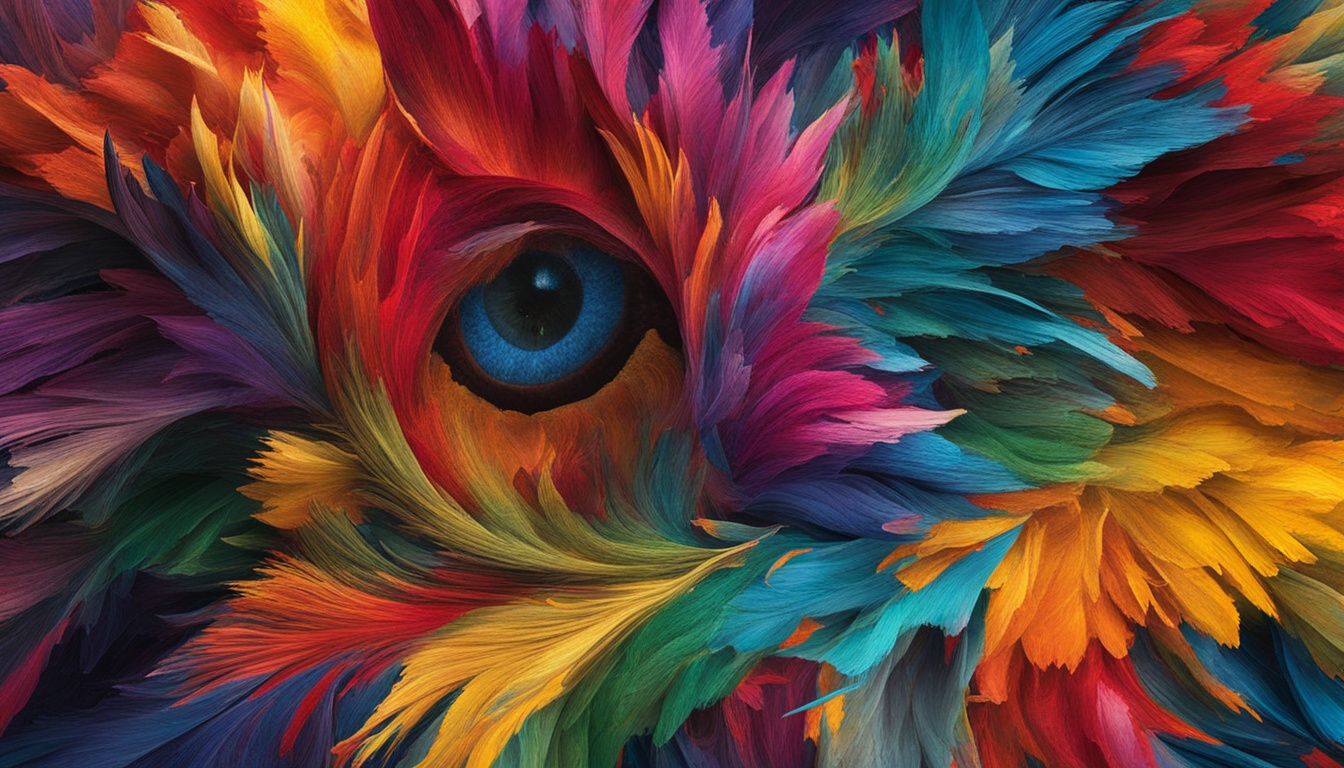Imagine stepping into a vibrant gallery where pixels dance on screens, sounds envelop you, and interactivity invites you to explore art like never before. This is the world of new media art, an exhilarating blend of creativity and technology that pushes the boundaries of what art can be. Perhaps you’ve felt a spark of excitement while navigating an interactive installation or stared in awe at a digital artwork that seemed to breathe life through its technology. If so, you’re not alone. As we journey through this immersive field, understanding new media art theory becomes essential for grasping not only the forms it takes but also the profound implications it holds for contemporary artistic expression.
In this exploration, we will delve into the very fabric of new media art and its theoretical foundations, examining how digital tools are reshaping creative practices. By investigating what is new media art theory, we will uncover the transformative power of technology, which has given rise to exciting subcategories like interactive installations and internet art. Together, let’s embrace the evolution of artistic expression, where traditional definitions are continually challenged and redefined in the age of digitality.
Key Takeaways
- New media art blends technology with artistic creativity, redefining traditional art forms.
- Understanding new media art theory is essential to navigate contemporary artistic practices.
- Digital tools and innovations play a crucial role in shaping the evolution of art.
- Collaboration and audience interaction are vital components of new media art.
- Technological advancements continually transform the meaning and experience of art.
Understanding New Media Art
New media art encompasses a diverse range of artistic practices that utilize technology as a primary medium. This field invites you to explore the evolving definitions and boundaries of art, integrating elements like interactivity, audience engagement, and cutting-edge digital methodologies. The significance of new media art comes from its ability to challenge traditional art forms and introduce innovative ways of viewing and experiencing creative expressions.
Definition and Scope of New Media Art
The term “new media art” gained traction in the mid-1990s and has roots tracing back to the 1950s, especially in the realms of cybernetic and oscilloscope art. Today’s new media art includes various forms, such as interactive installations, video art, and net art. This genre embraces critical, subversive, speculative, and creative strategies that push the limits of programmed processes, redefining conventional art practices. Artists like Jana Horáková, an associate professor in New Media Art, contribute significantly to the theoretical frameworks that support artistic exploration in this rapidly evolving field.
Technological Innovations in Art
The integration of technology in art has led to groundbreaking innovations. Artists now utilize advanced algorithms not only as tools for visualization but as creative partners that carry aesthetic responsibilities. Information art is one illustration of how data influences visual narratives, making technology a vital component of artistic expression. Educational institutions, such as the Faculty of Arts at Masaryk University, play an essential role in this evolution by providing courses that familiarize students with over 50 creative software tools. These tools, including visual grammars and fractals, empower artists to explore new realms in digital art creation.
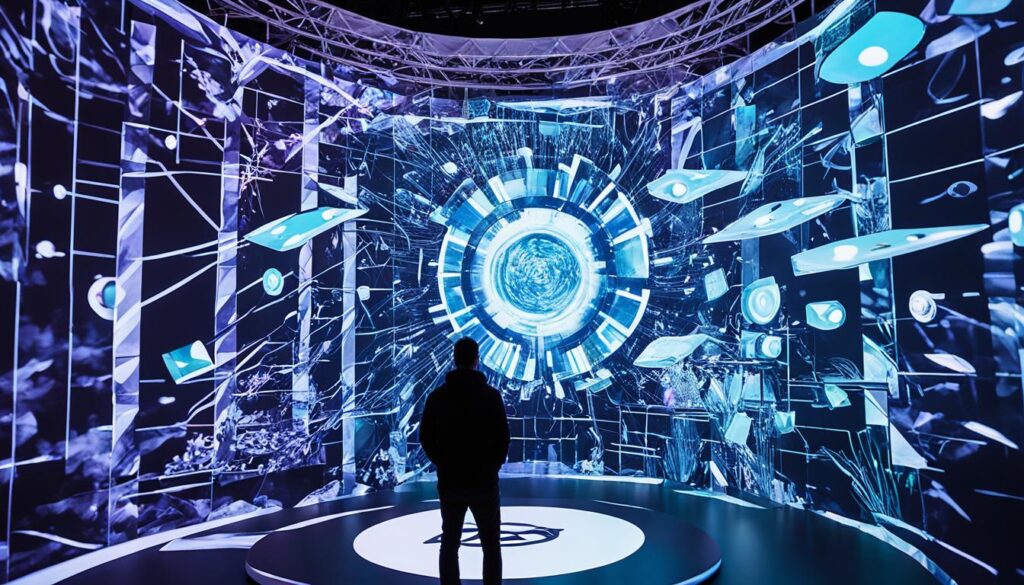
| Innovative Aspects | Examples | Impact on Art |
|---|---|---|
| Creative Software Tools | Adobe Photoshop, Blender | Shift from physical to digital mediums |
| Algorithms in Art | Generative art, AI collaboration | Rethinking authorship and creativity |
| Interactivity | Interactive installations, gaming | Enhanced audience engagement |
| Information Art | Data visualization, social data narratives | Challenging traditional representation methods |
The confluence of new media art and technological innovations in art continues to shape the future of creative endeavors. Artists increasingly collaborate with curators to enhance the understanding and distribution of their work, often forming collectives to support independent co-distribution across contemporary digital platforms. By engaging with these trends, you can discover new perspectives in the ever-expanding landscape of digital art.
What is New Media Art Theory
New Media Art Theory serves as an intricate framework for examining the convergence of art, technology, and culture. This field derives its foundational principles from various disciplines, including philosophy and cultural studies, offering insights into the dynamics of contemporary creativity. The discussion of what is new media art theory emphasizes its role in understanding the context and meaning behind art production, acknowledging that the methods employed by artists significantly shape the final artwork’s message. Understanding the art theory basics also involves exploring the role of the audience in interpreting new media artworks. This includes examining the ways in which digital technology and interactive elements affect the viewer’s experience and engagement with the artwork. By delving into these concepts, new media art theory provides a comprehensive framework for analyzing the complex interplay between art, technology, and culture in the digital age.
Foundational Concepts and Principles
At the heart of New Media Art Theory lies an emphasis on interactivity, non-linearity, and the relationship between the artwork and its audience. Various mediums such as virtual art, interactive installations, and digital art are explored. The theory examines how artists blend technology and traditional art forms, pushing the boundaries of contemporary art theory. This exploration often leads to the expression of complex cultural narratives, where themes like identity, surveillance, and corporate parody resonate strongly in a digital environment.
Comparative Analysis with Traditional Art Theories
When comparing New Media Art Theory to traditional art theories, noticeable differences emerge. Traditional frameworks often limit analysis to fixed classifications based on historical movements or techniques, while contemporary art theory promotes a more flexible approach that prioritizes ideas and innovation. New Media Art Theory advocates for new analytical models that reflect evolving creative practices. This dialogue illuminates the unique aspects of digital art theory, especially as artists like Nam June Paik and Stephanie Dinkins challenge existing norms and engage in new forms of expression.

History of New Media Art
The history of new media art encompasses a fascinating journey beginning in the 1960s, marked by innovation and the merging of technology with artistic expression. This period laid the groundwork for what would emerge as a vibrant and multifaceted field. As artists gained access to video technologies and early computer-generated imagery, they began to explore the dimensions of art in ways never seen before. Over the decades, this exploration expanded, driven by advancements in technology and shifting cultural landscapes.
Key Developments from the 1960s to Today
In the 1960s, new media art began to take shape, particularly with the introduction of video art. Artists in cities like Chicago explored the intersection of video technology with traditional mediums, resulting in a unique artistic expression. The 1980s brought significant advancements in computer graphics, enabling a host of new possibilities for artists. The rise of the Internet in the late 20th century opened avenues for interactive art, allowing connections that transcended geographic boundaries. Examples of new media art, such as computer animation and interactive installations, illustrate this evolution.
Influential Figures and Movements
Throughout this journey, influential figures in new media art have emerged, shaping the landscape with their innovative ideas and works. Artists like Nam June Paik garnered recognition as pioneers in video art, while Eduardo Kac has pushed boundaries by integrating genetics and DNA into his practices. Contemporary artists like JODI and Rafael Lozano-Hemmer exemplify the ongoing dialogue between art and technology, using themes such as surveillance and hacktivism in their projects. The rich tapestry of movements such as Dada and Fluxus continually inspire new expressions, reinforcing the importance of experimentation and subversion in the art world.

Interdisciplinary Nature of New Media Art
New Media Art exemplifies an exciting interdisciplinary art approach, where the boundaries between art, science, and technology become indistinct. This fusion creates an environment ripe for innovation, allowing you to explore diverse fields such as biology, computer science, and sociology. Immersive artworks emerge, challenging your perspectives and encouraging meaningful engagement. The intersection of scientific principles with artistic processes not only enhances creativity but also addresses critical contemporary issues, making it a vital aspect of artistic practice in the digital age.
Cross-Pollination of Art, Science, and Technology
By examining case studies, you can appreciate the depth inherent in interdisciplinary collaboration within New Media Art. Institutions like the Irish Museum of Modern Art (IMMA) showcase works that highlight this integration, featuring everything from painting to digital technology. Projects like the “Tangible Media Group” illustrate how artists harness human-computer interaction, while Jenny Holzer’s installations cleverly utilize data analytics to reinterpret public spaces. These artistic practices underscore the potential of merging traditional art with technology in art, revealing complex social dynamics you may not have previously considered.
Case Studies of Interdisciplinary Artistic Practices
As you delve into contemporary art practices, the role of interdisciplinary art becomes increasingly clear. The advancements in materials and technology provide a canvas for artists to challenge notions of traditional art forms. The modern era, reflecting on influences from the industrial revolution, showcases how artists are embracing technological obsolescence and experimenting with new media. You will find that institutions like the Walker Art Centre and New Museum promote these innovative practices, facilitating a rich dialogue that merges multiple disciplines, reinforcing that artistic practice in the digital age thrives on collaboration and knowledge integration.

